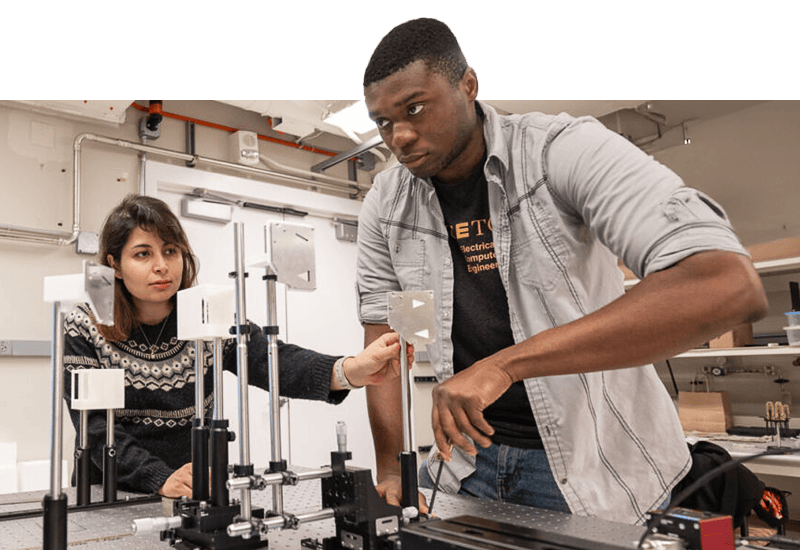
Department name change signals broad impact on computer and information technologies
By
on
Leaders from across disciplines agreed that the change better captures the department’s range of strengths and impacts.
“Acknowledging computer engineering in our name makes our core work more visible to the department’s constituents, including prospective students, faculty members and industry partners,” said department chair Sharad Malik, the George Van Ness Lothrop Professor in Engineering. “In many respects, this formal change reflects what’s long been true in our classrooms and in our labs.”
Roughly half of the department’s research efforts and seven of its 10 undergraduate sub-concentrations investigate aspects of computing and information systems.
Malik said the department takes a “full-stack” view of computing that connects an array of academic pursuits all geared toward technology in the service of humanity. An applied science approach to materials and devices enables the advanced processors and sensors in smart systems. An applied math-driven analysis of data and information guides how machines make decisions and inferences. And the engineering of the computing systems that integrate it all creates systems that address society’s most pressing challenges.
Professor Naveen Verma, for example, designs in-memory-computing chips with specialized devices and machine learning algorithms to build low-power, intelligent computing platforms. Associate Professor Prateek Mittal draws on a range of techniques from data and information science to secure communication networks. And a cluster of faculty members, including Professor Andrew Houck and Assistant Professor Nathalie de Leon, have taken lead roles in a major national initiative on quantum science and engineering, with an emphasis on devices and networks that will power new classes of future computing applications.
“The discipline of electrical engineering is exceptionally broad and has always been the nexus of innovation in new generations of computer and information technologies,” said Andrea Goldsmith, dean of the School of Engineering and Applied Science and the Arthur Legrand Doty Professor of Electrical Engineering. Goldsmith said the name change will convey that breadth more clearly to graduate and undergraduate students. “It will convey to potential employers the fact that graduates from the department have deep knowledge of computer engineering. It will also allow us to compete more effectively for top students by articulating more effectively the breadth of research and education in the department.”
Historically, the growth of information science that led to modern computing applications arose from within electrical engineering. Princeton’s electrical engineering department was founded in 1889, one of the first in the country. In the second half of the 20th century, as the theoretical underpinnings of computer science developed in parallel to advances in materials, hardware and architectures, the department expanded to become the Department of Electrical Engineering and Computer Science.
Computer science has since grown into its own large and robust field, forming a separate department in 1985. But the boundary between the two disciplines has always been porous, according to Jennifer Rexford, the Gordon Y. S. Wu Professor in Engineering and chair of computer science. Rexford pointed to areas of data science, machine learning and wireless communication where electrical engineers have played key roles in the mathematical foundations of modern applications.
“Computing also increasingly connects to the physical world through sensors, medical devices and so on,” said Rexford, who received her bachelor’s degree in electrical engineering at Princeton. “This welcome change signals the critical importance of computing across engineering and the entire campus.”
Over the past decade, Princeton engineering has invested heavily in those cross-disciplinary connections. The Metropolis Project integrates engineering advances in sensing, data processing and device networking with architecture, social science and the humanities to make 21st century cities more sustainable, equitable and livable for their residents.
The engineering school’s focus on Robotics and Cyberphysical Systems has led to the development of a new robotics lab that will bring together researchers from at least three departments to work on real-world problems in sectors such as transportation, energy and environment, and urban planning.
And researchers in the newly announced Princeton Bioengineering Initiative will include ECE faculty who work on bio-imaging and machine learning applications to improve health and treat disease.
“Ultimately, this shift lets Princeton cast a larger external shadow in computing,” Malik said. “It expands opportunities for our students entering the workforce and makes a statement to our external partners about Princeton’s strengths in transformative technological innovation.”









